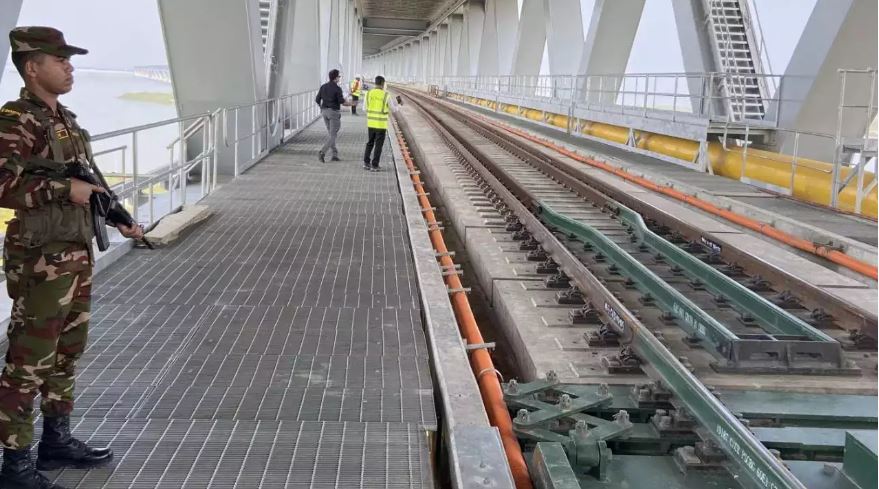The collaborative efforts between Bangladesh and India, fueled by shared aspirations and common goals, have solidified their ties. Their intertwined history, culture, and emotional connections continue to strengthen the growing social bond between the two nations. Economically, both countries are experiencing significant growth across various sectors, indicating strides in development. Moreover, their synchronized international agendas set the stage for joint ventures and cooperative initiatives.
A tangible prospect between India and Bangladesh is swiftly becoming a reality, thanks to the rapid advancements in infrastructure development that are bridging distances and fostering closer ties between these neighboring countries.
Infrastructural Growth and Political Ties
India’s connection with Bangladesh stands as unparalleled among all its international relationships. The potential for growth in this partnership knows no bounds, transcending the conventional limits of international diplomacy. India’s commitment to the stability and prosperity of Bangladesh remains unwavering, underscoring the profound importance it attaches to its neighbor’s well-being. For India, a stable Bangladesh is a strategic imperative. The infrastructural advancements not only offer smoother access to India’s Northeast but also pave the way for cross-country energy exchange, potentially routing power from Bhutan and Nepal to Bangladesh. Dhaka’s call for enhanced transmission lines in India reflects the mutual dependency on efficient connectivity.
However, amidst this progress looms the pivotal factor of stability, particularly with the impending elections and the current prevalence of widespread violence. Both Dhaka and New Delhi stand to benefit from sustained stability, emphasizing the criticality of a harmonious political landscape.
In essence, the burgeoning ties and infrastructural strides between India and Bangladesh paint a promising picture of connectivity and mutual progress.

As Bangladesh approaches its upcoming elections, slated for January 7, the evidence of robust infrastructural connections between the two nations mirrors the strengthening political relations. India recently (November, 2023) unequivocally extended its support towards the democratic advancement in Bangladesh during a high-level ‘2+2’ Ministerial Dialogue with the United States. Once during a press briefing, Indian Foreign Secretary Vinay Mohan Kwatra said, “We as a close friend and partner of Bangladesh, respect the democratic processes in Bangladesh and will continue to support the country’s vision of a stable, peaceful and progressive nation, that the people of that country seek for themselves”.
He also labeled Bangladesh’s upcoming elections as an internal matter.
However, the relationship between India and Bangladesh is marked by an unwavering commitment to mutual growth.
India-Bangladesh Relations
Over the last decade, Bangladesh and India have significantly strengthened their bilateral relations, particularly in domains such as security, communication, and developmental aid. This progress has been consistent and continues to advance steadily. Presently, India is actively engaged in 46 ongoing projects in collaboration with Bangladesh as a development partner, alongside supporting an additional 64 smaller investments.
Looking ahead, both nations anticipate a future brimming with promising prospects, guided by shared values of democracy, innovation, sustainable energy, and technology. India’s steadfast commitment to ensuring Bangladesh’s stability, combined with the enduring friendship between these neighboring countries, lays the groundwork for collaborative efforts poised to forge a prosperous path not just for the region but also beyond its borders.
Bangladesh-India Trade
- Bangladesh’s exports to India exceed $2 billion
- Bangladeshi exports to India quadrupled since 2011
- India Bangladesh’s 2nd-largest import market post China
- From $51.25 million in 2011–12 to $199 million in 2021–22
- India emerges as a pivotal market for Bangladeshi exports and imports
Changing face of trade between Bangladesh, India
India has emerged as Bangladesh’s primary bilateral trading partner. Despite global disruptions from Covid-19 and the Russia-Ukraine conflict, trade between the two countries has notably expanded. Importing from India is cost-effective and quicker, while exporting to India offers similar advantages. Both nations prioritize boosting trade and investment between them.
Bangladesh has found a significant market in India, surpassing $2 billion in product exports to its neighboring nation in recent years. The reduction in India’s sensitive goods list in 2011, announced by the then Prime Minister Manmohan Singh, facilitated almost duty-free access for Bangladesh, except for arms and drugs, under the South Asian Free Trade Area Agreement. Consequently, Bangladeshi exports to India have seen a nearly fourfold increase since then, soaring steadily over the past decade.
From $51.25 million in exports to India in the fiscal year 2011–12, Bangladesh’s export figures escalated to $199 million by the fiscal year 2021–22. Presently, India stands as Bangladesh’s second-largest import market following China. Despite a brief downturn during the Covid-19 pandemic, Bangladesh imported goods worth $16.16 billion from India in the fiscal year 2021–22, nearly doubling the import figures from the fiscal year 2017–18, as per Bangladesh Bank’s data analysis.

Progress Amid Challenges
Reflecting on Dhaka’s transformation, Bangladesh’s Minister of State for Foreign Affairs, Shahriar Alam, highlights the city’s evolution—a skyline peppered with modern infrastructure like the overhead expressway, Japanese-built metro railway, and ongoing mega projects. However, the city grapples with a notorious challenge: nightmarish traffic. Efforts like the expressway and metro rail aim to alleviate this.
India’s Stake and the Quest for Stability
For India, a stable Bangladesh is a strategic imperative. The infrastructural advancements not only offer smoother access to India’s Northeast but also pave the way for cross-country energy exchange, potentially routing power from Bhutan and Nepal to Bangladesh. Dhaka’s call for enhanced transmission lines in India reflects the mutual dependency on efficient connectivity.
However, amidst this progress looms the pivotal factor of stability, particularly with the impending elections and the current prevalence of widespread violence. Both Dhaka and New Delhi stand to benefit from sustained stability, emphasizing the criticality of a harmonious political landscape.
In essence, the burgeoning ties and infrastructural strides between India and Bangladesh paint a promising picture of connectivity and mutual progress. While challenges persist, the shared vision for a seamless travel corridor signifies a monumental step toward regional integration and cooperation.


